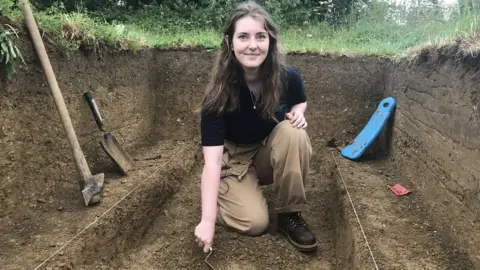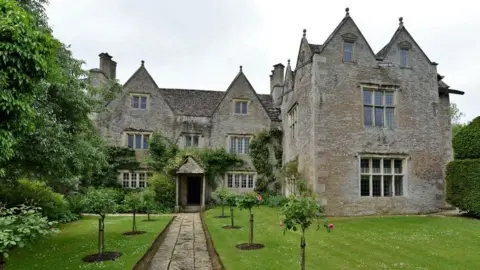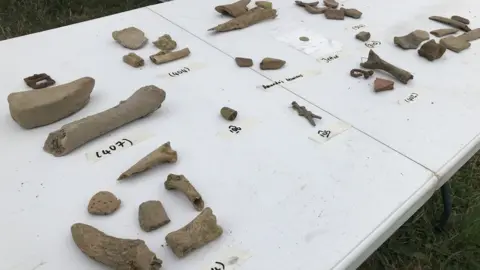Kelmscott Manor: Search for ancient settlement
 BBC
BBCArchaeologists are digging for evidence of an ancient settlement near the former country retreat of Arts and Crafts designer William Morris.
Kelmscott Manor, near Faringdon, Oxfordshire, was built around 1570 but it is believed the wider settlement could date back thousands of years.
The three-year project, led by Cotswold Archaeology, has found evidence of a much bigger medieval village.
The latest investigations have also yielded a piece of Iron Age pottery.
 Michael Garlick / Geograph
Michael Garlick / GeographIn the latest phase, researchers and volunteers have begun excavating evaluation trenches surrounding the village.
Archaeologist Indie Jago said: "It's really amazing for us, because we did test pitting here last year and we were finding that the medieval stuff was all to the west of where the church is today.
"These excavations are showing that the medieval village extended much further.
"We've got the continuing settlement to the west and lots of agricultural activity down to the south near where the manor is today."

The dig has been funded by part of a £4.3m Heritage Lottery Fund award that has also paid for repairs to the manor house, garden renovations and new visitor facilities.
The attraction, owned by the Society of Antiquaries, reopened in April following the two-year revamp.
The Grade I listed, limestone farmhouse near Faringdon was built on the bank of the River Thames for farmer Thomas Turner and was originally called Lower Farm.
William Morris, whose fabric designs are still used on hundreds of products from wallpaper to crockery, rented the property from 1871 until his death in 1896.

Follow BBC South on Facebook, Twitter, or Instagram. Send your story ideas to [email protected].
